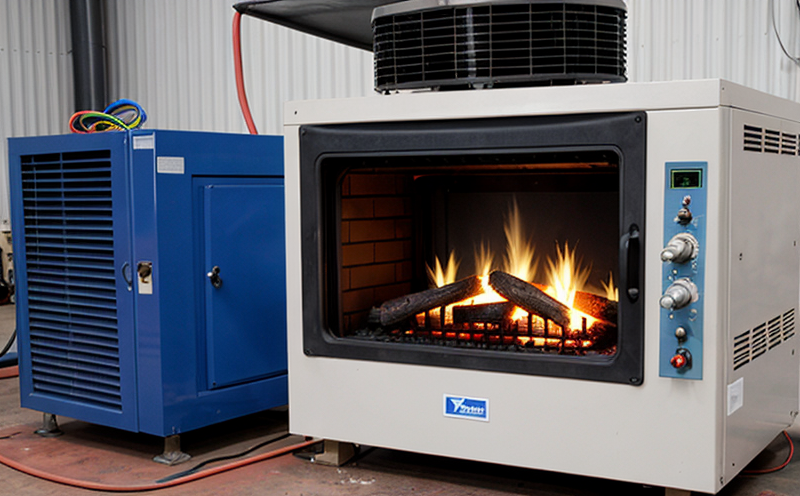IEC 62717 Thermal Testing of LED Modules Performance
The International Electrotechnical Commission (IEC) 62717 standard provides a comprehensive framework for the thermal testing of LED modules. This test evaluates the performance and durability of LED modules under various thermal stresses, ensuring they meet stringent safety and reliability requirements.
Thermal stability is crucial for LEDs as they are prone to degradation when exposed to high temperatures over extended periods. IEC 62717 addresses this by subjecting LED modules to controlled temperature cycling environments that simulate real-world conditions. This testing helps manufacturers identify potential issues early in the design process, ensuring product quality and compliance with international standards.
The standard covers a range of tests including thermal aging, thermal shock, and thermal cycling. These tests are essential for verifying the long-term performance and reliability of LED modules across diverse applications such as automotive lighting, commercial street lighting, and residential indoor lighting.
Compliance with IEC 62717 is mandatory in many regions to ensure that LEDs meet safety and quality standards. This testing not only protects consumers by reducing the risk of fire or other hazards but also ensures product longevity and energy efficiency.
The standard is applicable to both LED modules intended for general lighting as well as specific applications like automotive headlights, outdoor street lights, and other high-intensity discharge lamps. By adhering to this standard, manufacturers can enhance their brand reputation by demonstrating a commitment to quality and safety.
Scope and Methodology
| Test Type | Description | Methodology |
|---|---|---|
| Thermal Aging | Exposes LED modules to high temperatures over extended periods. | The LED modules are subjected to a constant temperature of 85°C for 100 hours, followed by a cool-down period at room temperature. This cycle is repeated five times. |
| Thermal Shock | Tests the LED module's ability to withstand rapid changes in temperature. | The modules are exposed to extreme temperature swings between -40°C and 150°C within a short time frame. Each cycle lasts approximately two minutes, with a cool-down period. |
| Thermal Cycling | Evaluates the LED module's performance under fluctuating temperatures. | The modules are cycled between -20°C and 85°C for a specified duration. Each cycle includes heating up to 85°C, holding at that temperature for one hour, cooling down to -20°C over two hours, and then maintaining the cold temperature for an additional four hours. |
The testing process begins with thorough preparation of the LED modules. This includes ensuring that all components are securely mounted and that any external connections are properly secured. The modules are then placed into a controlled environment where they undergo the specified thermal cycles as outlined in IEC 62717.
Throughout the testing, detailed measurements are taken to monitor key performance indicators such as luminous flux, color temperature, and electrical parameters. These metrics provide valuable insights into how well the LED modules maintain their performance under various thermal conditions.
Why Choose This Test
The IEC 62717 thermal test is a critical step in ensuring that LED modules meet stringent safety and reliability requirements. By undergoing this rigorous testing process, manufacturers can identify potential weaknesses early on, allowing for timely corrections before mass production begins.
This testing not only enhances product quality but also ensures compliance with international standards like IEC 62717, which is mandatory in many regions. Compliance helps protect consumers by reducing the risk of fire or other hazards associated with poorly designed LED modules.
Moreover, adherence to these standards can significantly enhance a brand's reputation among end-users and regulatory bodies. It demonstrates a commitment to quality and safety, fostering trust and loyalty within the market.
The test results provide valuable data that manufacturers can use to improve future designs. By understanding how different temperature conditions affect LED performance, they can optimize their products for better efficiency and longer life spans.
Use Cases and Application Examples
The IEC 62717 thermal test is particularly beneficial for manufacturers of LED modules used in various sectors, including automotive lighting, commercial street lighting, residential indoor lighting, and outdoor lighting. Here are some specific use cases:
- Automotive Lighting: Ensures that LED headlights can withstand extreme temperatures encountered during driving.
- Commercial Street Lighting: Validates the durability of LED street lights in harsh weather conditions.
- Residential Indoor Lighting: Guarantees consistent performance and longevity of indoor lighting fixtures under typical household temperature variations.
- Outdoor Lighting: Confirms that outdoor fixtures can operate reliably even when exposed to fluctuating temperatures and environmental factors.
In addition to these sectors, the test is also valuable for R&D teams who need to innovate and improve LED module designs. By using IEC 62717 as part of their development process, they can ensure that new products meet all necessary safety and performance criteria before being released to the market.





